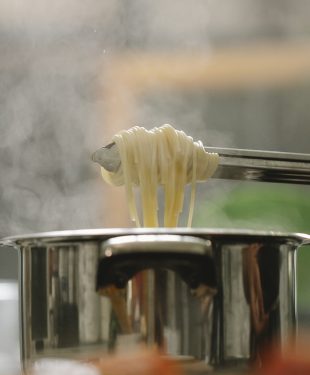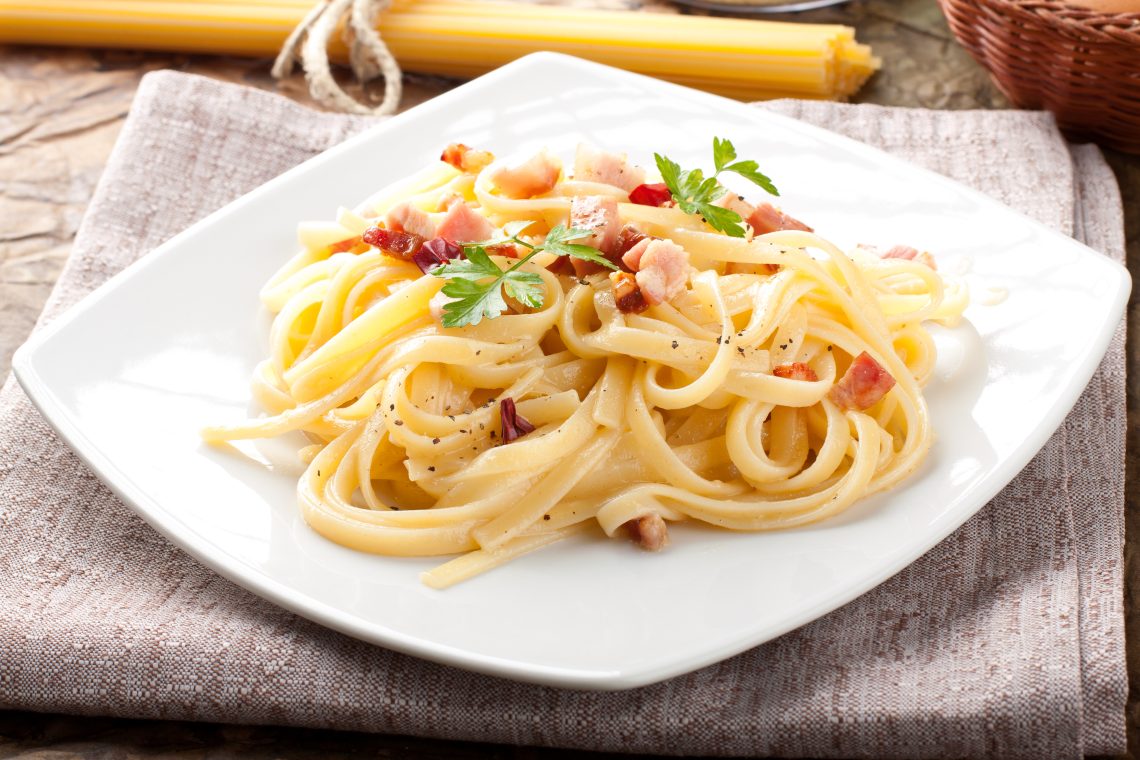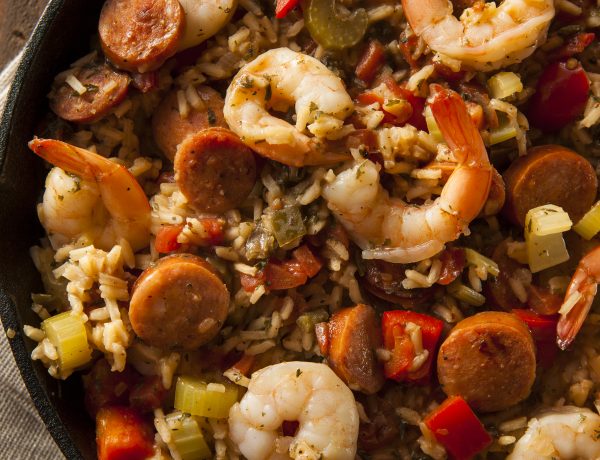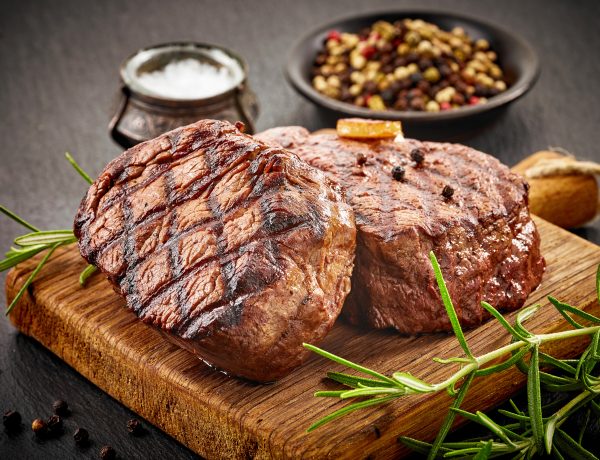Today we want to share some important tips on cooking perfect pasta every time! This essential skill is easier than you might think and involves just a few simple techniques. In this blog, we’ll cover everything from choosing the right pasta and boiling water, to sauce pairings and storage options.
So grab your apron, and let’s dive into these tips and tricks that will have you whipping up flavorful, al dente pasta dishes in no time. Let’s elevate your pasta game together—read on!
Common Questions You Might Have About Cooking Perfect Pasta:
1. What is the best way to cook pasta for optimal texture and taste?
The best way to cook pasta is by boiling it in a large pot of salted water for about 8-12 minutes, depending on the type of pasta being used. It’s important to stir the pasta occasionally while cooking, so it doesn’t stick together or to the bottom of the pot.
2. Should I rinse my cooked pasta before serving?
No, you don’t need to rinse your cooked pasta before serving it. Rinsing can wash off some of the starches that help sauces cling better, resulting in less flavorful dishes.
3. How much salt should I add when cooking my pasta?
A good rule of thumb is to use about one tablespoon of salt per every four quarts (16 cups) of water used when boiling your pasta.
4. Can I flavor my cooked pasta with something other than sauce?
Yes! You can toss your cooked pasta with olive oil or butter and add various seasonings like garlic powder or Parmesan cheese for extra flavor. Or you can mix things up by adding veggies or protein like shrimp, chicken, or tofu into a flavorful sauté pan full of tasty herbs & spices then toss everything together just before serving as hot dish full meal ideas!
Understanding The Basics Of Cooking Perfect Pasta
To cook perfect pasta, start by choosing the right type of pasta, using a large pot with plenty of water and boiling it correctly, ensuring you cook for the recommended time and test for doneness.
Choosing The Right Pasta

Photo by PublicDomainPictures on Pixabay
Selecting the ideal pasta for your dish is a crucial step in achieving that perfect plate of deliciousness. With an array of shapes and sizes available, it’s essential to understand which type works best with specific sauces and ingredients. For instance, long noodles such as spaghetti or fettuccine pair well with smooth, velvety sauces like marinara or Alfredo, while short pasta varieties like fusilli or penne are better suited for chunky meat or vegetable-based sauces.
Beyond shape and size, consider other factors when choosing the right pasta. Fresh pasta typically cooks faster – sometimes in less than 90 seconds – and offers a delicate texture compared to its dried counterpart. Plus, don’t forget there are gluten-free options made from alternative flours like rice or quinoa for those with dietary restrictions. Ultimately, finding the perfect noodle boils down to personal preference combined with knowledge of which type will enhance your chosen sauce and ingredients – ensuring a scrumptious meal every time!
Boiling Water Correctly
To cook the perfect pasta, boiling water correctly is essential. First, choose a pot large enough to accommodate your pasta comfortably. Fill it with plenty of water – at least four quarts per pound of pasta – and bring it to a rolling boil over high heat. Add salt generously to the boiling water before you add the pasta. As a rule of thumb, use one tablespoon of salt for every four quarts of water. The salt enhances the flavor and gives structure to the pasta by breaking down its starches.
Stirring occasionally prevents sticking while cooking your noodles in simmering water will produce an even cooking time throughout each piece. Use these tips when you’re ready to start cooking your perfect al dente spaghetti or any other recipe that includes noodles as a component ingredient!
Cooking Time And Testing For Doneness
To achieve perfect pasta, cooking time and testing for doneness are essential. Different types of pasta have different cook times, and it’s important to follow the directions on the packaging. However, these instructions may not always be accurate depending on factors such as altitude or personal preferences. To test for doneness, remove a piece of pasta from the pot and bite into it. The texture should be tender with a slight firmness – this is known as al dente. If it’s still too chewy or hard in the center, continue cooking for another minute or two until it reaches your desired consistency.
One helpful tip is to set a timer for 2-3 minutes less than what the package recommends so that you can check for doneness before overcooking your pasta. It’s also crucial not to rinse your pasta after draining as this removes starches that help sauce adhere to the noodles and change its texture negatively. Instead, reserve some of the starchy water in case you need to thin out your sauce later on while keeping all those precious flavors intact.
Perfecting pasta boils down (pun intended) to getting these fundamental steps right: using plenty of salted boiling water; stirring regularly; checking frequently for al dente perfection; and reserving some starchy liquid gold in case our sauces ever need thinning-out later on! By following these simple steps, anyone can turn their kitchen into an Italian trattoria serving up perfect plates every time!
Essential Techniques For Delicious Pasta

Photo by on Pexels
To ensure perfectly cooked pasta, it’s important to use a large pot with plenty of water and add salt for flavor; avoid overcrowding the pot, stir regularly, and reserve some pasta water to help thicken the sauce.
Using A Large Pot And Plenty Of Water
To cook perfect pasta, start by using a large pot and plenty of water. This allows the pasta to have enough room to expand and ensures that it cooks evenly. Using too small of a pot or too little water can cause the pasta to clump together, creating an unpleasant texture. As a general rule, use at least 4-6 quarts of water per pound of pasta. Additionally, make sure the water is boiling before adding the pasta. Boiling water helps prevent sticking and ensures that the noodles cook properly. Adding salt to the boiling water not only adds flavor but also helps season the pasta from within. Aim for about one tablespoon of salt per gallon of water.
Finally, avoid covering the pot while cooking as this can cause excess moisture buildup and prevent proper evaporation. Stirring frequently during cooking also prevents sticking and creates even heat distribution throughout all parts of the dish. With these tips in mind, you’ll be on your way to perfecting your pasta game!
Adding Salt To The Water
To make perfect pasta, adding salt to the boiling water is a crucial step often overlooked by home cooks. Salt enhances the pasta’s flavor and helps regulate its cooking time. For every gallon of water used, add at least one tablespoon of salt. The key is to season the water enough that it tastes like seawater but not too salty that you cannot eat it. When using flavored salts or table salt with additives such as iodine or anti-caking agents, be careful not to oversalt your pasta unintentionally. Err on the side of under-salting and adjust accordingly before serving. By properly seasoning your pasta water, you’ll ensure that each bite has balanced flavor and uniform texture throughout.
In Italy, they say that the pasta should be cooked in “a sea of boiling water” because there should be enough room for them to move around freely without sticking together or clumping up during cooking. You want enough space in between each strand so they do not touch each other while cooking; otherwise, they will float back up before becoming completely soft underneath. Properly seasoned water also helps prevent sticking by coating each noodle with a thin layer of saline solution as soon as it’s dropped into the pot.
Not Overcrowding The Pot
Using a large enough pot is essential when cooking perfect pasta, as overcrowding the pot can cause the noodles to stick together and cook unevenly. It’s important to give each noodle enough space to expand and move freely while boiling. A good rule of thumb is to use at least 4 quarts of water for every pound of pasta being cooked.
For example, if you’re cooking spaghetti, which tends to have longer noodles that need more room, you should use an even larger pot or break the noodles in half before adding them to the boiling water. On average, spaghetti takes around 8-10 minutes to cook al dente but may vary depending on other factors like altitude and humidity levels. By ensuring your pot isn’t overcrowded with too much pasta at once, you’ll end up with perfectly cooked and deliciously separate noodles every time. Plus, it’ll make stirring easier without risking breaking any long strands of spaghetti or damaging delicate shapes like ravioli or tortellini.
Stirring Regularly
Stirring the pasta regularly is essential to ensuring that it cooks evenly and doesn’t stick together. It’s best to use a long-handled spoon or tongs to stir the pasta gently every few minutes. This will help prevent clumping and ensure that each strand of pasta cooks properly. Stirring also allows you to test the texture of the pasta as it cooks, so you can tell when it’s done. It’s important not to be too aggressive when stirring, as this can cause the noodles to break apart. Additionally, don’t add oil to the water in an attempt to keep the noodles from sticking. This won’t work and may actually make your sauce slide off the noodles instead of adhering properly.
One pro-tip for perfectly stirred pasta is removing about 1 cup of cooking water before draining it completely. Reserve this starchy cooking liquid, which can be used in place of or in addition too liquids like broth or cream when making sauces since its starch content helps thicken up those sauces giving them a silky smooth texture while enabling better adherence with your beloved tanglers.Keyword: perfect pasta recipe
Reserving Pasta Water
One of the essential techniques to cooking perfect pasta is reserving some of the starchy water. Before draining your pasta, make sure to reserve about a cup of the water. This starchy liquid can be used to thicken sauces and help them stick better to your pasta. For instance, if you’re making a carbonara sauce that requires eggs, cheese, and cream or milk, adding some reserved pasta water can give it a velvety texture without making it too heavy.
Another way you can use this technique is when making tomato-based sauces for your pasta dishes. Adding some reserved pasta water helps emulsify the oil present in tomatoes with other ingredients so that they form a smooth sauce instead of having an oily top layer. This works particularly well if you’re using canned tomatoes that are less juicy than fresh ones.
In conclusion, reserving some of the starchy liquid from boiling your pasta is an effective trick for achieving perfectly cohesive and flavorful sauces for all kinds of Italian-inspired dishes. Ensure to follow these tips carefully as you prepare your next delicious plate of spaghetti or noodles!
Common Mistakes To Avoid
Avoid common mistakes like using too small of a pot or adding oil to the water, not salting the water, overcooking or undercooking the pasta, and rinsing it after cooking. It’s essential to follow these guidelines to ensure perfectly cooked pasta every time.
Using Too Small Of A Pot Or Too Little Water
Using a small pot or too little water when cooking pasta is one of the most common mistakes people make. This can result in uneven cooking and clumpy, sticky pasta. It’s recommended to use at least 4-5 quarts of water for every pound of dry pasta, allowing enough space for the noodles to expand and cook properly. If there isn’t enough room in the pot, the pasta may stick together and become mushy. The same goes for not using enough water – if there’s not enough liquid, your pasta will not cook evenly because it needs ample space to move around freely while boiling. So be sure to choose a large pot that can accommodate both the amount of water needed and some extra space for expansion.
Using an appropriate-sized pot with plenty of water also helps maintain a steady temperature throughout the cooking process, ensuring evenly cooked noodles every time. Remember that adding salt to your boiling water can enhance flavor as well as prevent sticking. By avoiding this common mistake you are on your way closer to perfecting your pasta game!
Not Salting The Water
Salt is essential in cooking perfect pasta. Salt helps to enhance the flavor of the pasta and adds depth to it. Without salt, your dish may taste bland and unappetizing. To ensure that you use the right amount of salt, add one tablespoon of salt for every four quarts of water. If you’re using a smaller pot, adjust accordingly. Skipping salt can also affect how well the pasta cooks. Salted water makes pasta more pliable, helping it to absorb moisture better while cooking. This process ensures even texture throughout the dish instead of mushy bits at some points and hard pieces at others.
Moreover, salting also has an impact on color – plain noodles become exceptionally pale without any seasoning agent; however, as soon as you sprinkle them with even a tiny pinch of sodium chloride (table salt), they take on a creamier appearance due to Maillard reactions during boiling. In conclusion, always remember that adding enough salt is crucial when boiling water for perfect pasta preparation. It enhances your dish’s overall taste and texture by making sure your spaghetti or lasagna turns out correctly cooked and deliciously flavorful!
Overcooking Or Undercooking The Pasta
Cooking pasta for the right amount of time is crucial to achieving that perfect al dente texture. Overcooking your pasta can result in a mushy, unappetizing mess, while undercooking it leaves you with a chewy, crunchy mess. The key is finding the sweet spot where the pasta has a slight bite but isn’t too hard or too soft. To avoid overcooking or undercooking your pasta, make sure to follow package instructions for cooking time and test the noodles regularly as they cook. You’ll want to start testing about two minutes before they’re supposed to be done since different factors like altitude and stove temperature can affect cooking time. And if you’re not sure how long to cook certain shapes of pasta, consult our handy [IMPORTANT FACTS] section above.
Remember that once you drain your cooked pasta and add sauce, it will continue cooking slightly from the residual heat. So don’t worry if your noodles seem slightly undercooked when you first taste them – by the time you serve them up on plates, they should be perfect!
Rinsing The Pasta
One common mistake when cooking pasta is rinsing it after you’ve drained the water. This will remove the starchy surface from the noodles, which can interfere with sauce adherence. However, there are exceptions where rinsing pasta may be necessary. For example, if you’re serving cold pasta for a salad or casserole dish, rinse it in cool water to prevent further cooking and sticking together.
Another alternative to rinsing your cooked pasta is tossing them with a bit of olive oil or butter instead. This not only prevents the noodles from drying out but will also add flavor to your dish. However, make sure not to use too much oil as this can overwhelm subtle flavors in more delicate dishes. Remember that perfecting your pasta cooking technique takes patience and practice; don’t be afraid to experiment with different methods until you find what works best for you!
Adding Oil To The Water
Adding oil to the water when cooking pasta is a common mistake that many people make. The belief is that it helps keep the noodles from sticking together, but in reality, oil and water don’t mix well, so most of the oil just floats to the top. This means that when you drain your pasta, you’ll end up with oily noodles that won’t absorb sauce as well and can become greasy.
Instead of adding oil, make sure your pot has enough water to fully cover the pasta without being overcrowded. Add salt to enhance flavor and stir occasionally while cooking. When done, use tongs or a slotted spoon to transfer the pasta directly into your sauce or strainer, avoiding rinsing unless making a cold dish like pasta salad. Following these simple steps will ensure perfectly cooked and deliciously sauced noodles every time!
Elevating Your Pasta Game
Take your pasta game to the next level by experimenting with different sauce flavors and combinations, trying out traditional Italian recipes from scratch, or adding unique garnishes and presentation techniques to showcase your perfected pasta dish.
Preparing The Perfect Sauce

Photo by on Pexels
The sauce is the key to elevating your pasta game, and with a little know-how, anyone can whip up a delicious topping. One essential tip for preparing the perfect pasta sauce is to start by sautéing garlic in olive oil. This will give your dish a flavorful base that will enhance any other ingredients you add. Next, consider pairing complementary flavors such as tomato and basil or spinach and mushroom. Another great way to infuse flavor into your sauce is by using fresh herbs like oregano, parsley or thyme. You can also experiment with different spices such as red pepper flakes or paprika. Finally, don’t be afraid to get creative! Try adding unexpected ingredients like roasted vegetables or even seafood to create unique and tasty pasta dishes. Whether you stick to classic recipes or add your own spin on things, following these tips will guarantee a perfectly cooked pasta dish every time!
Tips For Flavorful Pasta Combinations
One of the joys of cooking pasta is that it’s incredibly versatile and can be paired with a wide range of flavor combinations. To create flavorful pasta dishes, it’s important to consider the sauce you’re adding to your pasta. A classic tomato sauce or pesto works well with most types of pasta, but don’t be afraid to get creative! For example, try tossing spaghetti with sautéed garlic and chili flakes for a spicy kick or mixing penne with roasted vegetables for added depth.
Another tip for elevating your pasta game is to think beyond traditional Italian flavors. Consider pairing different cuisines’ spices and ingredients with your favorite noodles. For instance, try combining soba noodles with soy sauce, sesame oil, and veggies for an Asian-inspired dish. Or mix up linguine with olive oil, lemon zest, feta cheese crumbles and chopped kalamata olives for Mediterranean vibes. Remember when creating flavorful combinations that taste is subjective–what tastes great together according to one person may not work so well for another person’s palate or dietary restrictions as gluten-free diets require special kinds of pasta like chickpea-based chickpea fusilli etc! Be willing to experiment until you find what works best for you!
Pairing Pasta With Complementary Flavors
When it comes to pasta, pairing it with the right flavors can take your dish from good to amazing. One classic pairing is spaghetti with meatballs and a hearty tomato sauce. If you’re looking for something lighter, try tossing angel hair pasta with lemon and garlic shrimp or roasted vegetables. Another way to elevate your pasta game is by experimenting with different sauces and toppings. For example, pesto pairs well with penne while alfredo sauce goes perfectly with fettuccine. You can also add some crunch to your dish by topping it off with breadcrumbs or pine nuts.
It’s important to consider the texture of both the pasta and the complementary flavors when choosing how to pair them together. Avoid mixing soft noodles like lasagna sheets or ravioli with chunky sauces as they may overpower each other. Overall, experimenting with different flavor combinations is a fun way to discover new and delicious dishes in your kitchen. Don’t be afraid to get creative! And remember – use fresh ingredients whenever possible for the best results!
Creative Twists On Classic Recipes
One way to elevate your pasta game is by experimenting with creative twists on classic recipes. For instance, instead of the usual spaghetti and tomato sauce, try adding shrimp or clams to make a seafood dish. Alternatively, mix it up with different types of pasta shapes like fusilli or penne for a change in texture. If you’re feeling adventurous, why not try making homemade pasta from scratch? It’s easier than you think and can offer an entirely new taste experience.
You can also try pairing unusual flavors together in your sauces such as lemon with parmesan cheese or mushroom with truffle oil for something unexpected yet delicious. Another great tip is to add garnishes like chopped herbs or grated cheese on top of your pasta dishes before serving for added flavor and visual appeal. Ultimately, there are endless possibilities when it comes to creating unique and tasty pasta dishes that will impress even the pickiest eaters. So don’t be afraid to get creative in the kitchen!
Storing Leftovers
Don’t let your leftover pasta go to waste! To store leftovers, make sure the pasta is cooled to room temperature before transferring it to an airtight container. Keep it in the fridge for up to four days or in the freezer for up to two months. When reheating, add a bit of water or sauce and microwave for around 30 seconds per serving or gently reheat on the stovetop.
Remember that some types of pasta may not freeze well, especially those containing cream-based sauces. But don’t worry- there are plenty of creative ways to repurpose leftover pasta! Use it as a base for a delicious pasta salad or toss with vegetables and proteins for an easy stir-fry dinner. With these tips, you’ll be able to enjoy perfect pasta dishes even after they’ve been cooked once before.
Conclusion
Cooking perfect pasta may seem daunting, but with these tips and techniques, you’ll be a pro in no time. Remember to choose the right pasta shape, use plenty of water, add salt to the pot, and stir regularly. Don’t forget to reserve some pasta water for your sauce! Avoid common mistakes like using too small of a pot or overcooking your noodles. Elevate your pasta game by experimenting with different sauces and flavors. With practice and patience, you’ll be serving up delicious al dente pasta in no time. So why wait? Get cooking!
Read more cooking articles at ClichéMag.com
Images provided by Adobe Stock, Flickr, Unsplash, Pexels, Pixabay & Creative Commons




